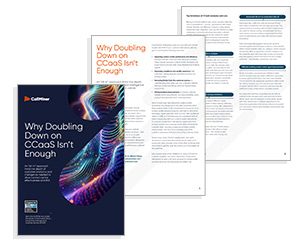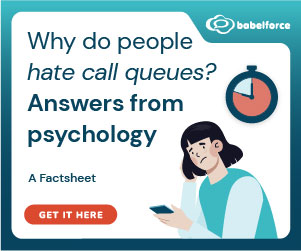The New-Normal
In the modern customer service landscape, consumers engage with businesses across a variety of channels and devices.
As they navigate from digital channels like online self-service and chat to email and phone formats, they expect seamless transitions and a personalized, contextual experience at every touchpoint.
The key to understanding omnichannel customer engagement is to visualize these points of contact as steppingstones in a single contiguous journey.
Understanding Omnichannel Engagement
True omnichannel customer engagement integrates multiple contact channels. Rather than managing each channel as a separate platform, an omnichannel approach manages them all from a single, unified console.
By mitigating technological gaps between communication channels, businesses reduce customer effort and provide intelligence to optimize agent performance.
Several challenges stand in the way of strong omnichannel performance. Lack of personalization, repeat information, and disjointed omnichannel experiences can impact customer retention.
The best way to overcome these challenges and eliminate communication channel boundaries is with the right technology solution.
Conversation intelligence platforms can capture 100% of customer contact at every touch point and convert that data into functional insights.
Additional benefits of conversation intelligence for omnichannel customer experience include:
- Developing a single view of the customer journey
- Easily navigating to previous or subsequent interactions from the same customer
- Determining root cause of repeat contacts and poor first contact resolution
- Capturing information across a multitude of platforms
6 Best Practices for Omnichannel Engagement
1. Meet Customers in Their Channel of Choice
The easiest way to provide top-notch service is to meet your customers where they are already. By checking the length of response times across channels you can balance your agents accordingly.
2. Offer Robust Self-Help with an “Out”
FAQs, tutorial videos and other self-service information can take the weight off call centres and provide customers easy solutions. Just remember to offer a path forward when self-help fails.
3. Creatively Mitigate Your Technology Siloes
Legacy systems with insufficient integration capabilities force customers to explain their problem again and again when moving between contact channels.
Arm your contact centre with improved knowledge management such as rigorous dispositioning coding to enable smooth transitions and ensure agents have access to past communications.
4. Address Every Channel
Process changes, instructional guidance and agent coaching can reduce the gaps customers experience when moving between channels.
Manually tracking disposition codes or preparing agents with scripts designed for emotionally charged customers can resolve challenges created by legacy communication channel silos.
5. Correlate Analytics Without Channel Boundaries
When utilizing a conversation intelligence platform, ensure text and speech analytics are consistently scored and presented, even when they are derived from channels yet to undergo integration.
6. Apply Continuous Improvement
Before implementing these best practices, test the four metrics listed below. Re-test after you’ve worked to improve your omnichannel customer experience to ensure everything is working as intended.
- Average response time by platform
- Shared knowledge between channels
- Ease of navigation
- Satisfaction regarding the response
This blog post has been re-published by kind permission of CallMiner – View the Original Article
For more information about CallMiner - visit the CallMiner Website
Call Centre Helper is not responsible for the content of these guest blog posts. The opinions expressed in this article are those of the author, and do not necessarily reflect those of Call Centre Helper.
Author: CallMiner
Published On: 13th Sep 2022
Read more about - Guest Blogs, CallMiner






 CallMiner is the leading cloud-based customer interaction analytics solution for extracting business intelligence and improving agent performance across all contact channels.
CallMiner is the leading cloud-based customer interaction analytics solution for extracting business intelligence and improving agent performance across all contact channels. 

































